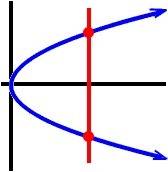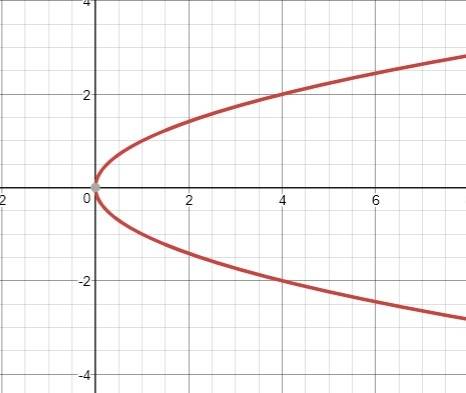 2
2 Sometimes
Step-by-step explanation:
Lets see
Let x be a positive number
x=3
|3| = 3
True
Let x =0
|0| = 0
True
Let x be a negative number
x=-3
|-3| =-3
3 = -3
False
So this is sometimes true
 2
2 Sometimes
Step-by-step explanation:
Lets see
Let x be a positive number
x=3
|3| = 3
True
Let x =0
|0| = 0
True
Let x be a negative number
x=-3
|-3| =-3
3 = -3
False
So this is sometimes true
 6
6 sometimes
Step-by-step explanation:
|x| = x
Lets look at some cases
x>0
Example
3
|3| = 3
3 = 3
Always when x>0
x=0
Example
0
|0| = 0
0 = 0
Always when x=0
x<0
Example
-3
|-3| = -3
3 = -3
Never when x<0
It is only true when x >= 0
So it is sometimes true
 11
11  3
3  11
11  6
6  2
2 Alright! So, your answer is: never a function.
First thing first, let's visualize what a graph symmetric to the x-axis looks like.
Take a look at the first attachment.
Pretty clear, it's symmetric across the x-axis.
To figure out if something is a function or not, use the vertical line test! What you do, is run a vertical line down the graph. Does it eventually give you more than one point? Then it's not a function.
Take a look at this the second attachment.
The vertical line intercepts in 3 different points at once on the top picture. Therefore, it is not a function.
If you're ever uncertain, try the vertical line test. :>
I haven't used in a long while, so pardon if the attachments are a little wonky.


Never
Step-by-step explanation:
Consider x = y^2 That is symmetric around the x axis. Ever value of x except 0 gives an x value that has 2 y values associated with it. See the graph below. I can't think of an example where something symmetric around the x axis is a function.

 2
2 Alright! So, your answer is: never a function.
First thing first, let's visualize what a graph symmetric to the x-axis looks like.
Take a look at the first attachment.
Pretty clear, it's symmetric across the x-axis.
To figure out if something is a function or not, use the vertical line test! What you do, is run a vertical line down the graph. Does it eventually give you more than one point? Then it's not a function.
Take a look at this the second attachment.
The vertical line intercepts in 3 different points at once on the top picture. Therefore, it is not a function.
If you're ever uncertain, try the vertical line test. :>
I haven't used in a long while, so pardon if the attachments are a little wonky.



It will provide an instant answer!
